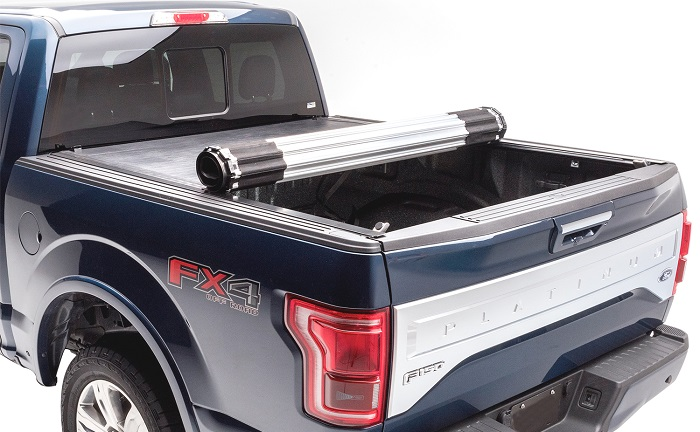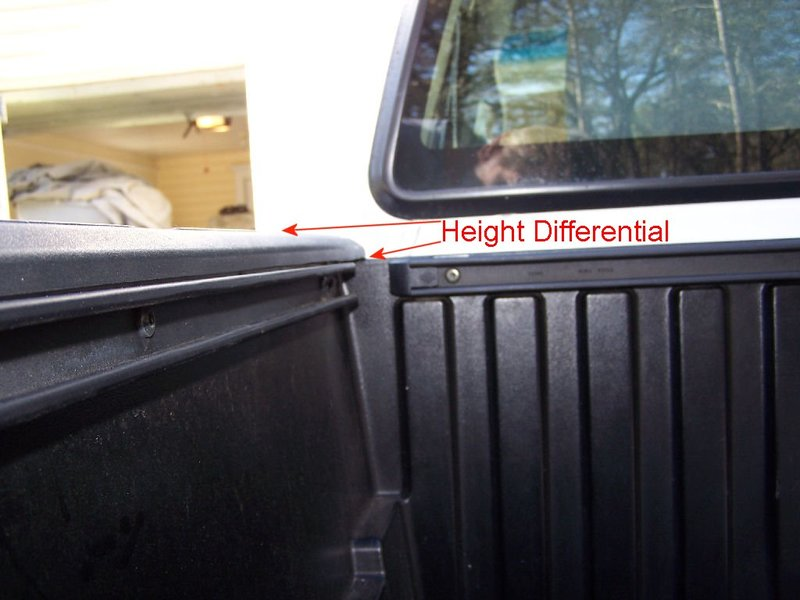Though tonneau cover is a comparatively newer term in the transport industry this has become an inevitable part of open vehicles. The main purpose of this particular object is to protect the bed on your vehicle and give it a sleek look. However, there are a few common issues with the tonneau covers, and leaking at bulkhead is one of them.
So, how can one solve the Tonneau Cover Leaking at Bulkhead issue?
Since there is a large gap lies on the bulkhead area of the tonneau cover, one needs to fill that gap first. For that, sealing is the best option and works great for filling any larger gap. For other kinds of leakages, one can go for double sealing. Installing water pipes also helps a lot in passing that extra water.
You just got the zest of our entire conversation through it. If you are waiting to know more about this, read the following article!
Why Does Tonneau Cover Leak in Bulkhead?

Tonneau cover makes a big difference not only in the look of the vehicle but also in functionality. This basically works as a cargo cover that protects the cargo from direct exposure to the outside. Other than that, it also gives a slick look to your vehicle.
Usually, tonneau covers are made of vinyl or thick cloth and tend to leak due to multiple reasons. The leaks especially take place in the bulkhead area. And this leaking issue can be troublesome for the user as it may damage the bed of the vehicle.
Reason:
Many reasons like lack of maintenance, or damage while using can be the cause behind a leaking tonneau cover. But if it is leaking from the bulkhead then it’s the gap between the bottom edge and the top of the front bed rail.

This gap appears automatically after installing the cover due to the drop of the bed liner. Sometimes a gap is also found in the tailgate area too.
Solution:
The idea of solving this particular issue is to fill the gap that is causing the water to leak. The rails need to be set perfectly without any gap to solve this problem. Sealing is one of the processes for solving this issue and another way would be filling the gap with a rubber insulator
Sealing The Gap:
Here in the following, you will find the detailed process of sealing the bulkhead leakage-
- First, start by cleaning the dirt and dust between the gaps using alcohol pads and q-tips
- Take a good sealant tape and cut it into half to fill the gap
- Now peel the backing of the gap and roll it on your hand until it fills the void
- When the tape is in its perfect shape of the void, place it between the gaps
- Press the gooey sealant with your hand so that it holds the shape of the void perfectly
- After feeling the upper gap, look underneath the gap and there is another gap that needs to be sealed
- Since this gap is bigger than the last one, repeat the same rolling process with a bigger amount of tape
- Place the tape on the gap and push it properly from below to hold the shape of the gap perfectly
- Repeat the same procedure for the other side of the vehicle as well and you are done with the process
Installing Rubber Insulator:
Here in the following, you will find the detailed process of installing rubber insulators in the bulkhead leakage-
- First, take a good quality ½” insulator made of rubber
- Remove the front cargo utility track that holds the tie-down clits of the cargo
- Start with the edge of the insulator and install it to the back of the utility track to clamp it between the utility track and the front of the bed
- Bolt the utility track back on the front of the bed which would leave the extra part of the insulator
- Finally, using a razor blade trim the excess of the insulator to match the angled taper of the side rail
The insulator is quite self-sticking so it is pretty convenient to install. However, do not remove the plastic wrap from the insulator while installing it for better protection.
Other Ways of Fixing the leaking Issues of Tonneau Cover
Sometimes your tonneau cover can leak not specifically from the bulkhead but from any random place. There are several other ways of fixing those issues. The steps are not very complicated and you can do it following the processes mentioned below-
Extra Sealing:
To cover the side leaks of the tonneau cover, you can use a layer of extra sealing all over the cover. It would be exactly the way we have used only on the bulkhead. Try to buy a seal that is compatible with the previous one.
When you are done choosing the seal, install it on the source of the leak. You can also apply the seal through the side frame of your cover. If you are struggling with the process, you can check the previous section where the sealing process has been described in detail.
Installing a Water Pipe for Drainage:
installing a water pipe is a wise decision for not only solving the leaking issue but also to avoid any further leaking. If you have sealed your bulkhead properly and yet facing the leaking issue then it is high time to install a water pipe for the drainage system.
Get your desired water pipes which come with adhesive and installation slots and start from one edge of the cover. Go through all the gaps in your tonneau cover by installing the pipe. Installing these pipes will make the bed cover stiffer and prevent the stagnation of the drips.
The good part is, these pipes can be used for both straight and round folded covers. Before buying your cover, make sure you visit a nearby shop to find your perfect fit.
Using Seal Kits:
Seal kits are an amazing tool in terms of keeping the cargo bed in good shape. A few essential tools like foam blocks, seals, or strengthens will also be there so you will be able to solve the tonneau cover from leaking issue very easily. So you can easily protect your cover from things that cause a leaking issue like snow, rain, or dirt.
How to Detect the Leaks and Seal It
While you are rearing the leaking tonneau cover problem, you need to be very careful about the steps because you don’t want to make any mistakes and make the situation even worst. Here is the proper way of detecting the leaks and sealing it the following-
- Cover the cargo bed with cardboard and take the help of someone who can flashlight from underneath to detect where the leak is located
- Sprinkle water from the top of the cover like artificial rain so that you can detect the leaks better and understand how bigger they are
- Now open the lid and tape or mark the leaks so that they can be found easily
- Decide your way of treating the leak according to its size of it either sealing or installing a water pipe
- Cover the leak with your preferred option and cover the cargo with the bed
- Finally, you are ready to test whether the leaks are covered properly or not
Read also: Bakflip Mx4 Problems
How to Make Tonneau Cover Waterproof?
As we already know double sealing is the best option for better protection. After setting the tonneau cover there will always be a large gap between the tailgate and the truck bed. And this gap is the main way of leakage through the cover.
However, there are several kits and solutions available in the market to solve this problem. And while choosing the seal kit you need to be very careful because the kit works differently depending on the model of your vehicle.
If all of these still don’t solve your issue, then it must be the tonneau cover that has been used for longer and needs to be exchanged.
Frequently Asked Questions (FAQs):
Where is the bulkhead seals should be on the tonneau covers?
The bulkhead seals should be directly on the top of the header seal. After applying the seal, let it set properly on the gap and then trim it off with scissors so that there remains no excess. Truxport covers are preferable for such sealants so that they can seat better on the bulkhead.
What is the purpose of bulkhead seals?
Bulkhead seals are a self-lubricating agent that is designed to seal the bulkhead gaps for shafts. The main purpose of the seal is to protect the bulkhead from any kind of dirt leakage or damage so that your tonneau cover remains safe.
Of what material bulkheads are made?
The traditional bulkhead materials are wood timber. Here for steering, treated lumbers are used with the steel sheet piling. These are the materials that work well not only performance-wise but also in terms of cost. This works far better than wood as wood is easily prone to damage.
Also read: Gatortrax Tonneau Cover Problems
Final Words
That was all from our side regarding Tonneau Cover Leaking at Bulkhead. Hope you found the article useful enough for you.
One added tip here, do not make any excuse for the regular maintenance of your vehicle and tonneau cover. That would make the hassle lot less.
That’s it for now. Until next time, safe driving!
Read also: How To Patch A Hole In A Tonneau Cover?
